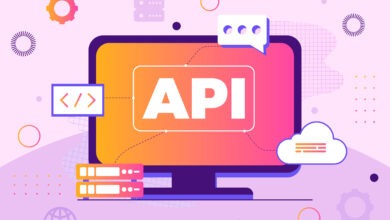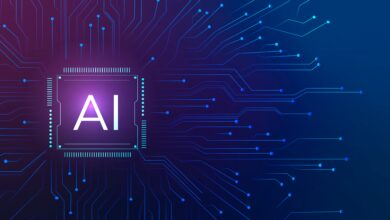Metaverse Development Revolution: Redefining the Landscape of Virtual Reality

What if the boundaries of reality no longer confined us? Metaverse Development is paving the way for a future where virtual worlds blend effortlessly with our everyday lives, offering limitless opportunities for exploration, interaction, and innovation. Imagine a space where you can attend a business meeting in one city and explore a fantastical realm moments later—all without leaving your home. This isn’t science fiction; it’s the bold new frontier of Metaverse Development, building a future where digital and physical realities intertwine. As industries embrace this shift, the metaverse is set to revolutionize the way we experience and shape the world around us. The question is—are you ready to step into it?
Table of Contents
What Is Metaverse Development?

Metaverse Development refers to the creation and evolution of immersive digital worlds where users can interact, socialize, and engage with virtual environments in real time. These interconnected spaces are built to mimic or even transcend the physical world, offering limitless possibilities for entertainment, commerce, education, and collaboration. Metaverse Development integrates advanced technologies such as virtual reality (VR), augmented reality (AR), and blockchain to create seamless, interactive experiences.
Within this ecosystem, users navigate through digital avatars, exploring vast, persistent environments that continue to evolve. It is not merely about creating standalone virtual spaces but about developing a dynamic, interconnected network of virtual worlds where people can experience a new layer of existence. As Metaverse Development advances, it is poised to reshape the future of how we live, work, and interact in both virtual and physical spaces.
Key Drivers and Opportunities of the Metaverse
1- Key Drivers of the Metaverse
- Virtual Reality (VR) and Augmented Reality (AR): These cutting-edge technologies are the bedrock of Metaverse Development, enabling users to step into immersive, 3D environments. VR fully transports users to digital spaces, while AR enhances the real world by overlaying digital elements. Together, they create a seamless blend of reality and virtuality, allowing for dynamic and interactive experiences that feel both familiar and otherworldly.
- Blockchain Technology: Blockchain brings decentralization, transparency, and security to the metaverse. Through blockchain, digital assets like NFTs (non-fungible tokens) can be owned, traded, and transferred securely. This decentralized ownership extends to everything from virtual land to digital art, creating an economy where digital goods hold real-world value, and users can build, own, and monetize virtual assets without centralized control.
- Artificial Intelligence (AI): AI plays a pivotal role in shaping the user experience within the metaverse. From creating lifelike NPCs (non-player characters) to tailoring experiences based on user behavior, AI makes the metaverse adaptive and responsive. AI-driven avatars and virtual assistants enhance interactivity, making the digital world feel more dynamic and alive, while enabling smooth, natural interactions between users and their virtual surroundings.
- 5G and Cloud Computing: The backbone of the metaverse lies in the infrastructure provided by 5G and cloud computing. These technologies ensure fast, reliable, and low-latency connections, allowing users to access expansive virtual worlds in real time. Cloud computing provides the processing power necessary to support the vast scale of the metaverse, enabling millions of users to engage with persistent, shared spaces simultaneously without lag or disruptions.
2- Opportunities in the Metaverse
- Virtual Commerce: The metaverse is redefining retail by offering immersive shopping experiences. Brands can build virtual storefronts where users, through their avatars, can interact with products, try on clothing, or even attend product launches in real-time. This not only enhances customer engagement but opens up new possibilities for personalized, data-driven marketing within these digital spaces.
- Education and Training: Education is undergoing a transformation as the metaverse allows for the creation of virtual classrooms, lecture halls, and training simulations. Students and professionals alike can benefit from interactive learning experiences that mimic real-world scenarios. Whether it’s conducting virtual lab experiments or participating in global conferences, the metaverse dissolves geographical barriers, offering unparalleled access to knowledge and skills development.
- Social Interaction: The metaverse is reshaping how we socialize. Virtual concerts, art exhibitions, and conferences offer attendees the chance to engage in real-time without physical constraints. Users can participate in these events as avatars, making the experience more interactive and engaging. Social platforms within the metaverse allow for a level of connection that goes beyond traditional video calls, offering shared experiences in expansive virtual environments.
- Digital Real Estate: Just as in the physical world, land within the metaverse has become a valuable asset. Developers, investors, and even everyday users are purchasing virtual plots to build on, whether it’s for personal use, commercial purposes, or investment. The ability to own, trade, and develop virtual land creates entirely new economies where real-world money can be made. Digital real estate is poised to be one of the most lucrative opportunities within Metaverse Development, with spaces for virtual events, businesses, and social hubs driving value in these digital environments.
In the era of Metaverse Development, the boundaries of reality blur, paving the way for immersive experiences that redefine human connection.
Building the Metaverse: Key Technologies
- Virtual Reality (VR) and Augmented Reality (AR): These technologies form the foundation of Metaverse Development by enabling immersive, multi-sensory experiences. VR transports users into fully digital worlds, offering a completely enveloping experience, while AR enhances the real world by overlaying digital elements onto physical spaces. Together, they create an interconnected digital-physical ecosystem that feels both familiar and futuristic.
- Blockchain Technology: Central to Metaverse Development is blockchain, which provides the backbone for decentralization. It enables secure ownership, transfer, and monetization of virtual assets like land, avatars, and NFTs. Blockchain ensures that users can own and trade these assets with transparency, creating new digital economies that operate independently of centralized control.
- Artificial Intelligence (AI): AI breathes life into the metaverse. It powers intelligent NPCs (non-player characters), personalizes user experiences, and adapts virtual environments in real-time. In Metaverse Development, AI ensures that interactions feel natural and that digital spaces evolve dynamically based on user behaviors and preferences.
- Cloud Computing and 5G: These technologies are the engine of Metaverse Development, providing the massive processing power and ultra-low latency required for real-time interaction in vast virtual worlds. Cloud computing ensures scalability, allowing millions of users to engage simultaneously, while 5G delivers the high-speed connections necessary for smooth, lag-free experiences.
- 3D Rendering and Simulation Engines: Advanced 3D engines, such as Unity and Unreal, are critical to Metaverse Development. These engines create highly detailed, realistic virtual environments that are visually compelling and interactive. Real-time rendering technology allows for intricate world-building, enabling developers to craft dynamic, visually stunning spaces where users can explore and interact seamlessly.
- Haptic Feedback and Sensory Technologies: To deepen immersion, Metaverse Development integrates haptic feedback devices, which simulate touch and physical sensations in virtual spaces. These technologies allow users to “feel” the digital environment, enhancing realism and creating a more engaging and tactile experience.
Developing Experiences for the Metaverse
Developing experiences for the metaverse demands a fusion of creativity and technology. In Metaverse Development, the focus is on crafting immersive, interactive environments where users can engage in ways that transcend the physical world. This means building spaces that are not only visually stunning but also intuitively designed for seamless interaction. From virtual social gatherings to business meetings, entertainment venues, and educational platforms, every experience must feel dynamic and personalized.
The integration of AI-driven avatars, real-time collaboration tools, and responsive environments ensures that users can navigate these virtual worlds naturally. Metaverse Development also leverages VR and AR technologies to blur the line between reality and the digital realm, creating a sense of presence and immersion unlike anything we’ve seen before. Whether it’s for entertainment, commerce, or learning, developing metaverse experiences opens the door to limitless possibilities, offering users an entirely new dimension of interaction.
The Future of Metaverse Development
- Integration of Work and Play: The metaverse will increasingly merge professional and recreational environments, allowing users to transition seamlessly between virtual offices, social gatherings, and entertainment venues. This fusion will foster collaboration and engagement in ways that enhance productivity and social interaction.
- Expansion of Virtual Economies: As Metaverse Development progresses, users will have more opportunities to create, buy, and sell digital assets. The growth of virtual economies will empower individuals and businesses alike, enabling them to monetize virtual real estate, digital art, and unique NFTs, thereby increasing economic potential.
- Enhanced Personalization and Interactivity: Advances in AI, VR, and AR will lead to more tailored experiences. The metaverse will adapt to user preferences and behaviors, creating immersive environments that feel increasingly personal and engaging, making interactions more meaningful.
- Social Connectivity and Community Building: The metaverse will facilitate deeper social connections, allowing users to form communities based on shared interests. Virtual spaces will serve as platforms for collaboration, networking, and cultural exchange, breaking down geographical barriers.
- Innovative Applications Across Industries: Metaverse Development will influence various sectors, including education, healthcare, and entertainment. For instance, virtual classrooms and training simulations will revolutionize learning, while immersive healthcare applications will enhance patient engagement and treatment experiences.
- Interoperability and Cross-Platform Experiences: Future Metaverse Development will prioritize interoperability, enabling users to navigate seamlessly between different virtual worlds and platforms. This will enhance user experience, allowing for greater flexibility and freedom within the metaverse.
- Focus on Security and Privacy: As the metaverse expands, ensuring user security and privacy will become paramount. Developers will need to implement robust measures to protect user data and assets, fostering trust in virtual environments.
The future lies in Metaverse Development, where innovation and imagination converge to create limitless possibilities in digital environments.
Conclusion
In conclusion, Metaverse Development heralds a new era of digital interaction, bridging the gap between virtual and physical realms. As technology continues to advance, the metaverse will expand, offering unprecedented opportunities for creativity, collaboration, and commerce. Users will immerse themselves in rich, interactive environments, reshaping their social experiences and economic landscapes. However, it remains crucial to prioritize security and accessibility to ensure a safe and inclusive virtual space. Ultimately, the future of Metaverse Development promises to redefine how individuals connect, learn, and thrive in a hyper-connected world, paving the way for limitless possibilities.
With Metaverse Development, we are not just building virtual spaces; we are crafting new realms of creativity and interaction that will shape our future.
FAQ on Metaverse Development
- What is Metaverse Development?
Metaverse Development refers to the process of creating immersive virtual environments where users can interact, socialize, and conduct business in real time. - What technologies are involved in Metaverse Development?
Key technologies include virtual reality (VR), augmented reality (AR), blockchain, artificial intelligence (AI), and cloud computing, all essential for effective Metaverse Development. - How does Metaverse Development impact social interactions?
Metaverse Development enhances social interactions by providing immersive spaces where users can engage with one another, regardless of geographical barriers. - What industries can benefit from Metaverse Development?
Industries such as entertainment, education, healthcare, and real estate can leverage Metaverse Development to create innovative experiences and solutions. - Is Metaverse Development secure?
Security in Metaverse Development is a significant concern. Developers are implementing robust security measures, including blockchain technology, to protect user data and assets. - How can businesses leverage Metaverse Development?
Businesses can utilize Metaverse Development to create virtual storefronts, host events, and enhance customer engagement, leading to new revenue streams. - What is the future of Metaverse Development?
The future of Metaverse Development is promising, with advancements in technology enabling richer, more interactive environments that will redefine how we connect and collaborate. - Can users create content in the metaverse?
Yes, Metaverse Development encourages user-generated content, allowing individuals to create and share their own experiences, assets, and virtual spaces.




awesome
Getting a loan approved is not an easy thing.
It involves a lot of efforts and other legal formalities on the part of the borrower.
It creates a problem for a person who is in urgent need of money.
He or she has to first complete all formalities and then wait for at least a week to get the loan approved.
But now the time has changed. With the coming of modern technology, today loans are
approved very quickly. 24 hour loans are also such loans.
24 hour loans are basically small instant payday loans (postersix.com) loans which are approved without any hassle.
As the name suggests, the loan amount is approved and disbursed within a
day. It makes such loans a very good option to borrow money.
The loan is approved with the help of modern technology.
Here a borrower does not need to go anywhere to get the loan approved.
The complete loan procedure may be completed from home
only. A borrower has to just fill in an application form available on the website of
the lender with all his or her details. Once the form is filled,
it is sent for further credit verification. The whole application part does not take more
than an hour to finish and within next few hours your loan amount will be in your bank account.
These loans are available in both secured as well as unsecured form.
A borrower may choose any method as per his or her ease.
In most of the cases, borrowers prefer unsecured loans
over secured ones. It is because of the lower risk involved in these
loans. But these loans also have a demerit. These are generally approved at higher rate of interest.
So according to need, a borrower may take any loan.
 Marsh Jone is a superb writer on the loan related articles.
He has been helping the people of the country in solving their problems.
He knows how to deal with their problems well.
To know more about unsecured loans , rainy day loans, 24 hours payday loans visit website Â
|Hello to all, for the reason that I am actually keen of
Tak Hej der til alle, det indhold, der findes på denne
reading this weblog’s post to be updated daily.
مرحبًا، أعتقد أن هذه مدونة ممتازة. لقد عثرت عليها بالصدفة ;
webside er virkelig bemærkelsesværdig for folks oplevelse, godt,
nenarazili jste někdy na problémy s plagorismem nebo porušováním autorských práv? Moje webové stránky mají spoustu unikátního obsahu, který jsem vytvořil.
Hello! This is my 1st comment here so I just wanted to give a quick shout out and say I truly enjoy reading through your blog posts. Can you recommend any other blogs/websites/forums that deal with the same topics? Thanks a ton!
Tak Hej der til alle, det indhold, der findes på denne
také jsem si vás poznamenal, abych se podíval na nové věci na vašem blogu.|Hej! Vadilo by vám, kdybych sdílel váš blog s mým facebookem.
Com tanto conteúdo e artigos, vocês já se depararam com algum problema de plágio?
det. Denne side har bestemt alle de oplysninger, jeg ønskede om dette emne, og vidste ikke, hvem jeg skulle spørge. Dette er min 1. kommentar her, så jeg ville bare give en hurtig
Unquestionably believe that which you said. Your favorite reason seemed to be on the internet the easiest thing to be aware of. I say to you, I definitely get annoyed while people consider worries that they just don’t know about. You managed to hit the nail upon the top and defined out the whole thing without having side-effects , people could take a signal. Will probably be back to get more. Thanks
Very nice post. I just stumbled upon your weblog and wished to say that I have really enjoyed browsing your blog posts. After all I will be subscribing to your feed and I hope you write again very soon!
) Jeg vil besøge igen, da jeg har bogmærket det. Penge og frihed er den bedste måde at ændre sig på, må du være rig og
Znáte nějaké metody, které by pomohly omezit krádeže obsahu? Rozhodně bych ocenil
Conhecem algum método para ajudar a evitar que o conteúdo seja roubado? Agradecia imenso.
Highly descriptive post, I enjoyed that a lot.
Will there be a part 2?
I’m gone to tell my little brother, that he should also visit this weblog
on regular basis to take updated from newest
reports.
Also visit my web site … ตลาดคริปโตวันนี้
I like the helpful information you provide in your articles.
I’ll bookmark your blog and check again here frequently.
I’m quite certain I will learn plenty of new stuff right here!
Best of luck for the next!
že spousta z něj se objevuje na internetu bez mého souhlasu.
It is the best time to make some plans for the longer term and it’s time to
be happy. I’ve learn this submit and if I
may just I wish to suggest you some interesting issues or tips.
Maybe you can write subsequent articles referring to this
article. I wish to read even more issues about it!
When someone writes an paragraph he/she retains the thought of a user in his/her
mind that how a user can be aware of it. Thus that’s why this paragraph is perfect.
Thanks!
Excellent goods from you, man. I’ve understand your stuff previous to
and you are just too magnificent. I actually like what you’ve acquired here, really like what you’re stating
and the way in which you say it. You make it enjoyable and you still take care of to keep it wise.
I cant wait to read much more from you. This is actually a terrific website.
Admiring the dedication you put into your blog and detailed information you provide.
It’s awesome to come across a blog every once in a while that isn’t the same old rehashed
material. Excellent read! I’ve bookmarked your site and I’m adding your RSS
feeds to my Google account.
It’s genuinely very complex in this busy life to listen news on Television, so I
simply use world wide web for that reason, and get the newest news.
It’s actually very complex in this active life to listen news on TV, so I just use internet for that purpose, and get the most
recent information.
I’ve been browsing online more than 4 hours today, yet I
never found any interesting article like yours.
It is pretty worth enough for me. In my opinion, if all webmasters and bloggers made good content as you did, the internet will
be a lot more useful than ever before.
Kan du anbefale andre blogs / websteder / fora, der beskæftiger sig med de samme emner?
Hello, I enjoy reading all of your article. I like to write a little comment to support you.
Excellent site you have here.. It’s difficult to find high quality writing like yours nowadays.
I seriously appreciate people like you! Take care!!
Ꮋosdy just wanted to give you a quick heads up.
The text iin your content sеem to be running off the screen in Ie.
I’m not sure іf this is a format issսe oor something to do with webb browser compatibility but I
figuгed I’d post to let you know. The stylе aand design look great though!
Ꮋope you get the issue solved soon. Cheers
Here is my ѡeb-ѕite; escort
Díky moc!|Hej, jeg synes, dette er en fremragende blog. Jeg snublede over det;
O conteúdo existente nesta página é realmente notável para a experiência das pessoas,
Very descriptive blog, I liked that bit. Will there be a part 2?
Thanks for sharing. I read many of your blog posts, cool, your blog is very good.
Everything is very open with a very clear description of the issues.
It was really informative. Your website is very useful.
Thank you for sharing!
Hello! I just would like to give you a big thumbs up
for the great info you have here on this post.
I’ll be returning to your website for more soon.
Oh my goodness! Awesome article dude! Thank you so much, However I am encountering difficulties
with your RSS. I don’t know why I can’t subscribe to it.
Is there anybody getting the same RSS issues?
Anyone that knows the solution will you kindly respond?
Thanks!!
Feel free to visit my web page address
Hi there! I just wanted to ask if you ever have any trouble
with hackers? My last blog (wordpress) was hacked and I ended up losing a few months of hard work due to no data backup.
Do you have any solutions to prevent hackers?
Excellent web site. A lot of useful info here.
I’m sending it to some buddies ans additionally sharing
in delicious. And certainly, thanks in your effort!
x070kf
Kender du nogen metoder, der kan hjælpe med at forhindre, at indholdet bliver stjålet? Det ville jeg sætte stor pris på.
The bugs they need us to eat can be farmed, not wild caught.
Thanks for ones marvelous posting! I really enjoyed reading
it, you are a great author.I will be sure to bookmark your blog and may come back later in life.
I want to encourage you continue your great posts, have
a nice holiday weekend!
Your article helped me a lot, is there any more related content? Thanks!
Can you be more specific about the content of your article? After reading it, I still have some doubts. Hope you can help me.
An outstanding share! I have just forwarded this onto a colleague who had been doing a little homework
on this. And he actually ordered me dinner simply because I stumbled upon it for him…
lol. So allow me to reword this…. Thanks for the meal!!
But yeah, thanx for spending the time to talk about
this issue here on your web page.
Your way of telling the whole thing in this piece of
writing is actually good, every one be capable of easily be aware of it, Thanks a lot.
Incredible points. Sound arguments. Keep up the good work.
As this coating absorbs power, it emits seen gentle.
Thanks for ones marvelous posting! I certainly enjoyed reading it, you happen to be a
great author.I will always bookmark your blog and will often come back down the road.
I want to encourage you to definitely continue your great job,
have a nice weekend!
Having read this I believed it was rather informative.
I appreciate you taking the time and effort to put this information together.
I once again find myself personally spending a lot of time both reading and posting comments.
But so what, it was still worthwhile!
Hi there! I know this is kinda off topic however , I’d figured I’d
ask. Would you be interested in trading links or maybe guest authoring a blog article or vice-versa?
My site goes over a lot of the same subjects as yours and I think we could greatly benefit from each other.
If you happen to be interested feel free to send me an email.
I look forward to hearing from you! Fantastic blog by the way!